Netbook deluge rains new Atoms, too
Mar 2, 2010 — by LinuxDevices Staff — from the LinuxDevices Archive — viewsAsus has reportedly used the CeBit show in Germany to launch five netbooks, some of which employ Intel's Atom N455 and N475 CPUs, previously unannounced processors that support DDR3. Meanwhile, Intel added the previous N450, D410, and D510 to its embedded roadmap, touting seven-year availability.
Intel's Atom N470 was announced just yesterday. This CPU, headed for devices including HP's Linux-ready Mini 5102/2102 netbooks, includes the same on-chip graphics as the other CPUs in the chipmaker's "Pineview" family, but bumps clock speed to 1.83GHz.
Now, word of two more Atoms has been leaked by Asus, which provided word about them in the context of netbook announcements at CeBit, according to websites including Electronista, Laptop, and SlashGear. It's said the N455 is an upgrade to the N450, retaining the earlier CPU's 1.66GHz clock speed but adding support for DDR3 memory. Similarly, the 1.83GHz N475 adds DDR3 support to the N470.
Asus has not posted news of its new netbooks or their processors on any of its websites. However, according to SlashGear writer Chris Davis and an unbylined Electronista report, the company showed off its new devices at a CeBit press conference and served up details of the new Atom processors.
No word was provided about whether the adoption of DDR3 delivers tangible benefits for either performance or battery life. And, as is sadly now usual for Asus, the new EeePCs appear to be shipping only with Windows 7, not Linux. Still, we provide brief details below due to the devices' apparent technical significance.
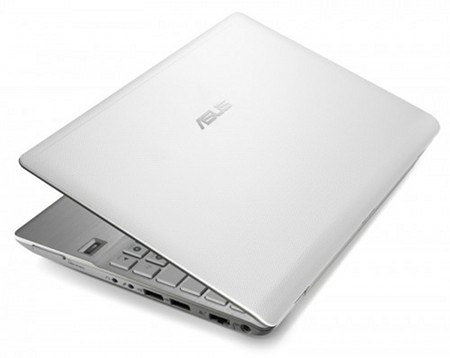
The Asus 1018P Prime
It's said the new flagship netbook from Asus is the EeePC 1018P Prime (above), which resembles Apple's chic MacBook Air. Just 0.7 inches thick, the device will sport an aluminum case that comes in four different colors, a frameless 10.1-inch display, a fingerprint reader, USB 3.0, and Bluetooth, according to multiple reports. A 4,400MaH battery is claimed to provide 10 hours of operation.
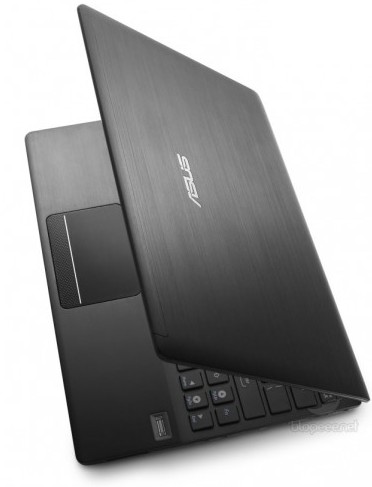
The Asus 1016P
The 1016P (above) is reportedly thicker but also comes with an aluminum finish, plus, yet again, the previously unknown N455 and N475 CPUs. An optional six-cell, 6,300mAh battery is said to provide up to 14 hours of operation. Meanwhile, the 1015P (below) is apparently much the same as the 1016P, but with a case made of plastic instead of aluminum.
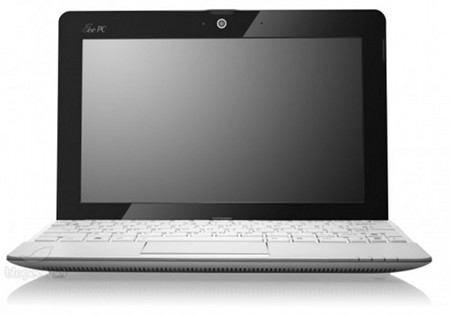
The Asus 1015P
Finally, there's the EeePC 1001PQ, said by Electronista to be aimed at children. Featuring a 1.66GHz N450, 160GB of RAM, and a 160GB hard drive, the device will be available in yellow/black and purple/black color schemes, the website says.
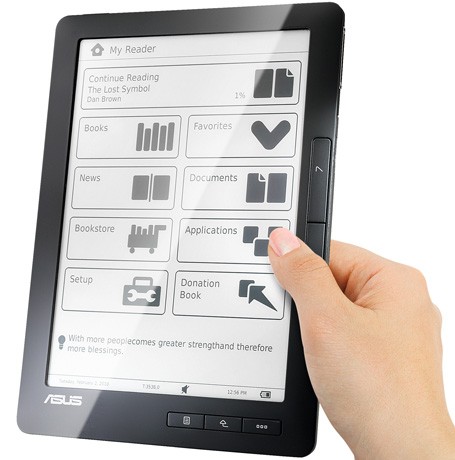
The Asus DR-900
According to multiple reports, Asus also announced an e-reader featuring a nine-inch touchscreen with 1024 x 768 resolution, WiFi, and optional 3G connectivity. It's claimed the DR-900 (above) is no thicker than a pencil, offers 10,000 page battery life, and employs e-paper screen technology from Sipix rather than E Ink. No word on the device's processor or operating system has surfaced, however.
Atoms report for embedded duty
While Intel hasn't provided information about the new N455 and N475 CPUs, the chipmaker wasn't totally silent today on the topic of Atoms. The N450, D410 and D510 unveiled in December are now officially suitable for embedded devices, with seven-year lifecycle support, the company announced.
According to Intel, these Atoms "offer an excellent solution for embedded market segments such as print imaging, digital signage, retail and transaction solutions (point-of-sale, ATMs, kiosks, transaction terminals), thin clients, digital security, residential gateways, commercial and industrial control." No technical changes to the 45nm CPUs were announced, but Intel did make clear that the preferred companion chip for embedded devices is the 82801HM I/O controller, as shown in the diagram below.
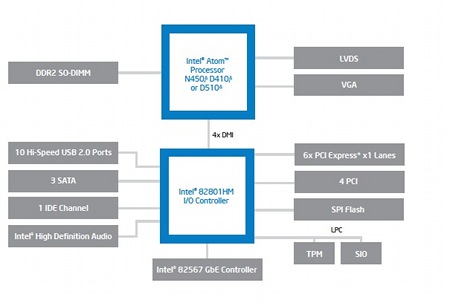
A block diagram of Intel's N450, D410, and D510 and 802801HM I/O controller
Source: Intel
(Click to enlarge)
Further information
Reports on the new Asus netbooks and Atom processors may be found on SlashGear, here and here, Electronista, here, and Laptop, here.
Information about the Asus DR-900 may be found on Slashgear, here.
This article was originally published on LinuxDevices.com and has been donated to the open source community by QuinStreet Inc. Please visit LinuxToday.com for up-to-date news and articles about Linux and open source.